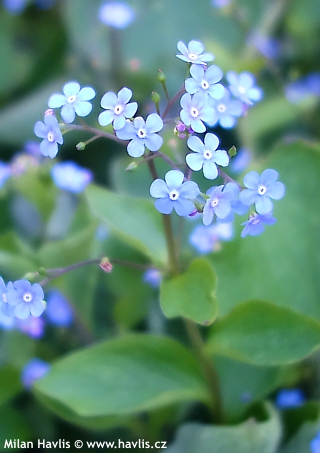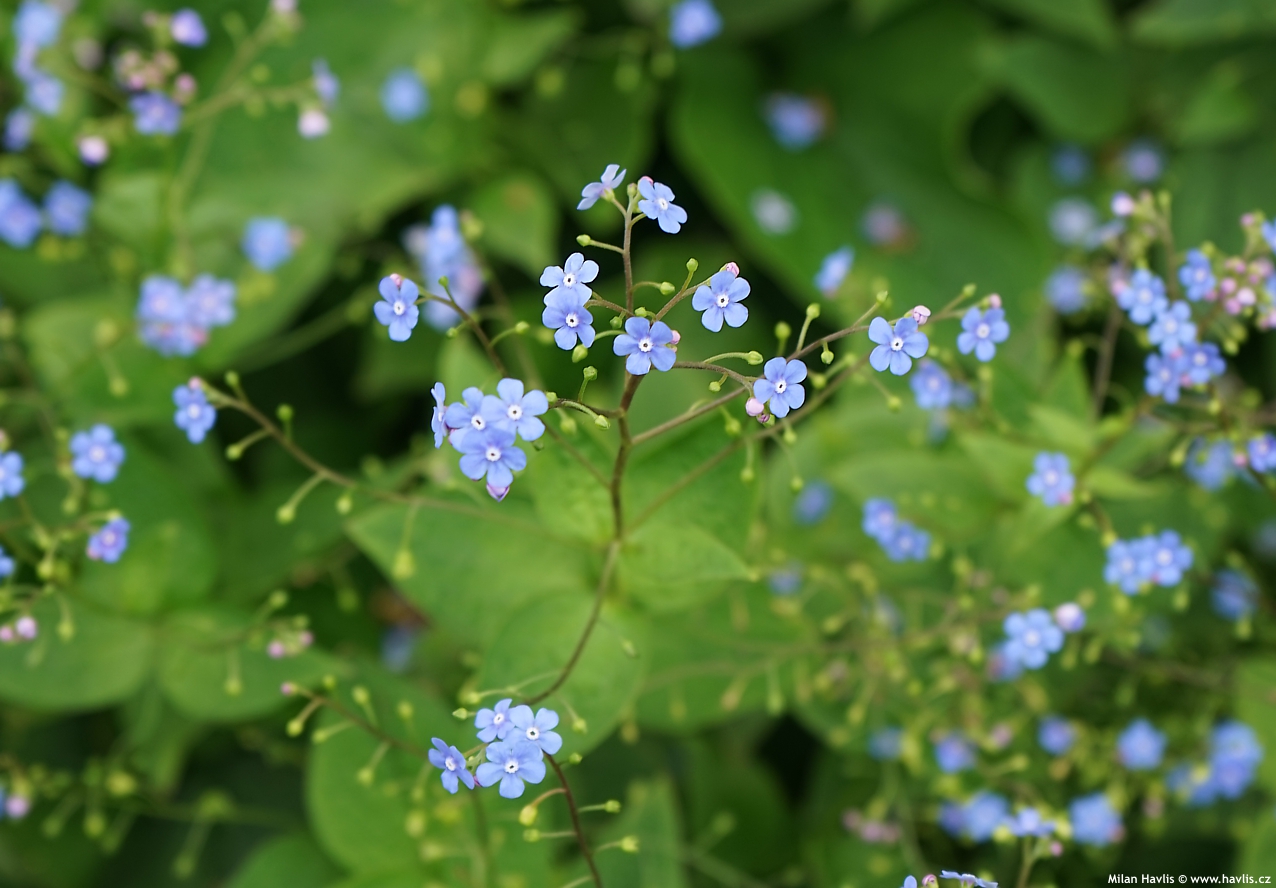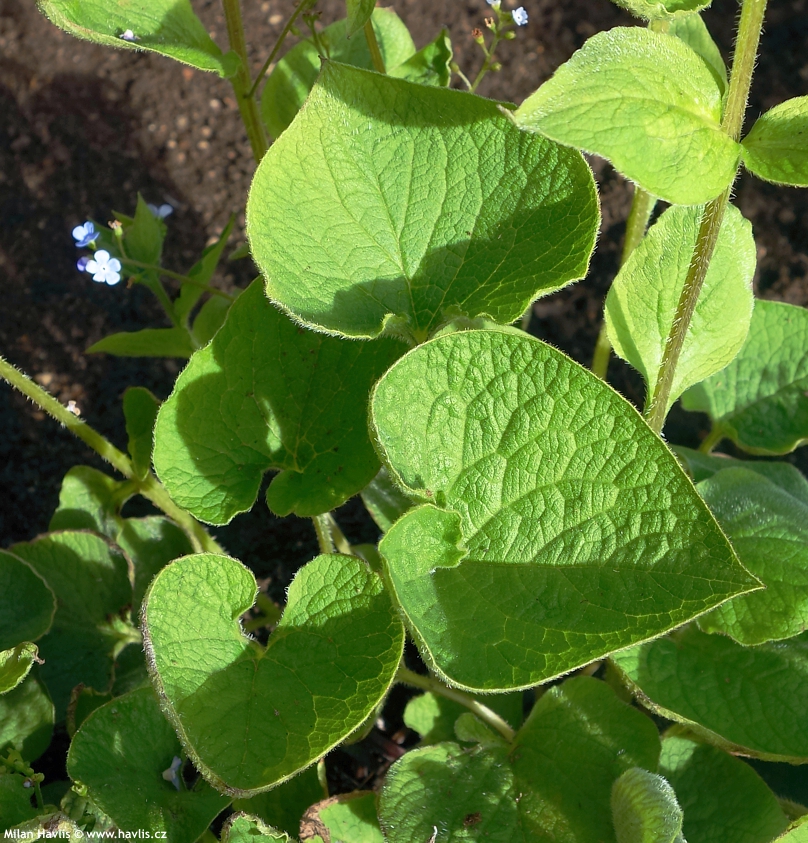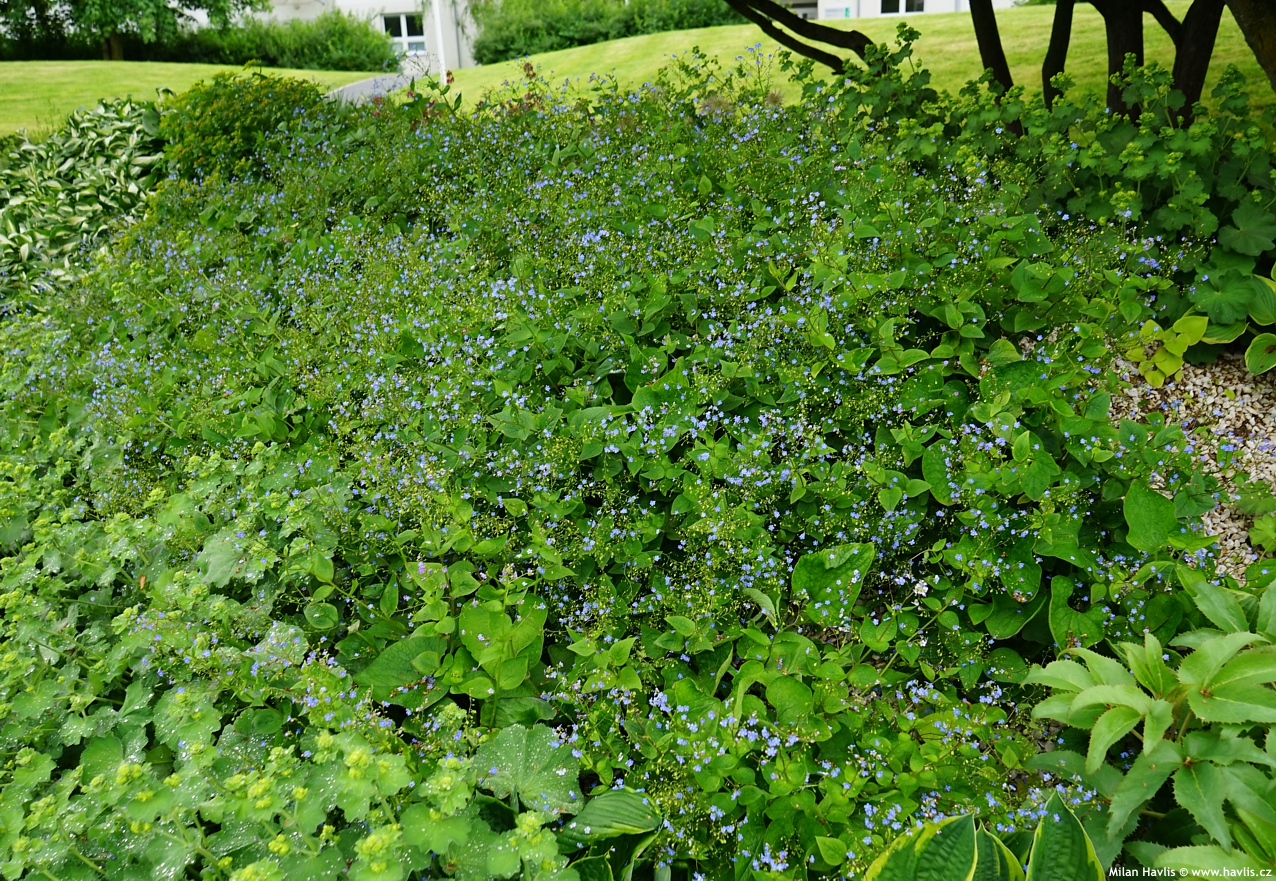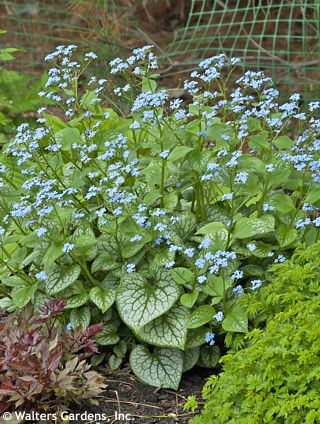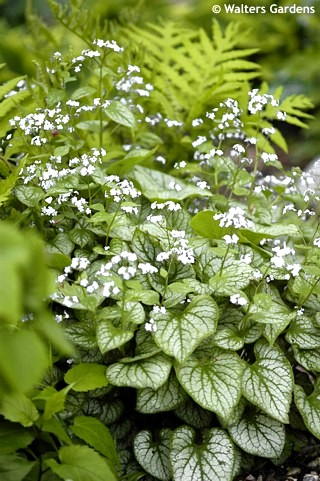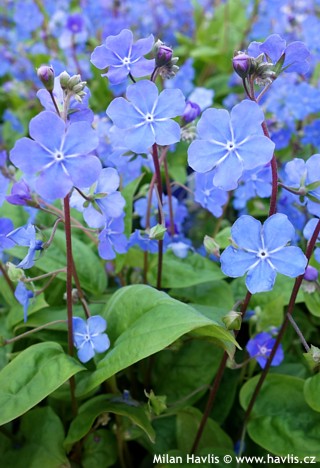Brunnera macrophylla brunnera, Siberian bugloss


In mid spring, commonly late April in zone 6, appear small, sky blue, forget-me-not-like flowers on thin stems 20-30 cm tall, in thin, cyme-like panicles for almost two months. It looks best in mass plantings and as it is quite slow forming a groundcover on its own we suggest planting in densely, e.g. 5-6 plants per square meter. It is not invasive nor travels around the garden with shoots or seeds itself off.
Brunnera does best in semi-shade or full shade with sufficient moisture. It needs cool, humus-rich, well-drained, moist soil. Fully hardy to -40°C (USDA zone 3).
Last update 20-10-2016
Goods are shipped all over Europe. For Russia and U.K. and for further details please read about SHIPPING OPTIONS HERE.
Are you interested in a serious discount for orders NOV-FEB? Check your options here.
THE PRICES INCLUDE VAT of 15%. For quick conversion you can use 1 CZK = approx. 0.04 EUR
- STANDARD QUALITY - Plants of this group are 1st class quality with number of branches and overall density adequate to their size and age, considering they were container grown.
- DE LUXE QUALITY - This label guarantees a luxurious quality of manually selected plants that, compared to their height and age, are exceptionally dense and beautiful.
- EXTRA - These plants are usually mature and bigger specimens with exceptional overall appearance.
- STANDARD (as described in the plant form) means a tree with a trunk of 190-210 cm and a crown at the top, unless specified differently. The commercial size for trees is their girth measured in the height of 1m from ground.
- HOBBY - These plants are of the same quality as our standard-quality plants but younger and therefore cheaper.
- SHRUB - a woody plant with branches growing bushy from the ground level.
- HALF-STANDARD or MINI-STANDARD - a small tree with shorter trunk, its size is usually specified.
- FEATHERED - These are trees with branches growing already from the base of the trunk and up along the stem.
- GRASSES and PERENNIALS - Sizes given usually read the diameter of the pot or the clump, as specified.












